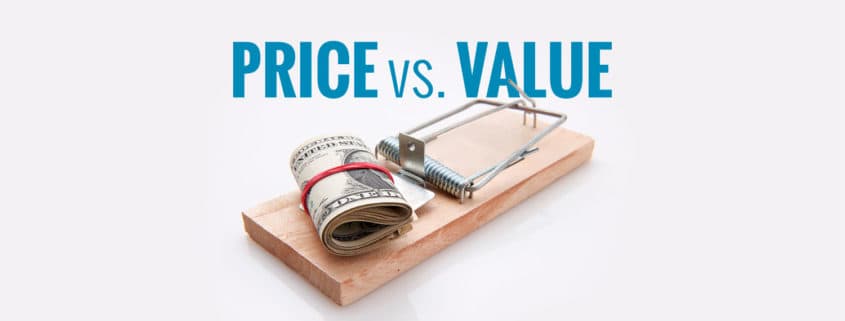Price vs. Value
Low Price Leader?
In my opinion, one of the worst habits I hear some new business owners express has to do with pricing. When a business owners aspires to lead with low prices, here’s what I hear:
- I don’t understand what I’m worth.
- I don’t value my time.
- I haven’t researched what my service or product actually costs to provide.
- I don’t expect to be a long-term player in the market.
- I prefer to be really busy and I don’t really care whether that busyness is productive or profitable.
To be fair, there are circumstances and industries where an established leader has become monopolistic and they are making an excessive profit. It can be a legitimate strategic aim to enter the market at a lower price point when the cost and capital structure allows you to do so while still generating a profit.
Low Pricing Usually Isn’t a Strategic Advantage
The overwhelming majority of small businesses and startups should NOT aspire to lead with deep discounts or enter the market with a lower price point than the competition. You may be inclined to do some sort of grand opening event or have a giveaway. But please don’t succumb to the self-defeating instinct to drop prices drastically to grab attention!
If you don’t want to lead with a lower price, what should you do?
There is more than one way to arrive at a sustainable, profitable price structure. Here are some ideas:
- Study your competitors’ pricing. If you have a concrete reason why your cost structure or value offering is fundamentally different from theirs, then adjust the pricing accordingly. If not, and especially if your competition has been in business for more than two or three years, consider just mirroring their pricing.
- Explore data from the Small Business Development Center. The SBDC in Greenwood, SC has a wealth of local industry data. It may not be relevant to all businesses and all industries (this is especially true for emerging industries or specific niche businesses). But industry data from your market can be a clue as to what you should charge.
- Take advantage of trade association resources. The Graphic Artist Guild publishes their Handbook: Pricing & Ethical Guidelines each year. It includes price ranges based on national survey data. It also has guidelines for calculating hourly rates and other price mechanisms. Perhaps there is a similar resource in your industry?
There you go. The next time you feel the itch to drop the price to get the sale, remember this post. Do NOT fall prey to the lure of lower prices! Instead, work to establish fair pricing and fair value for the price.





Leave a Reply
Want to join the discussion?Feel free to contribute!